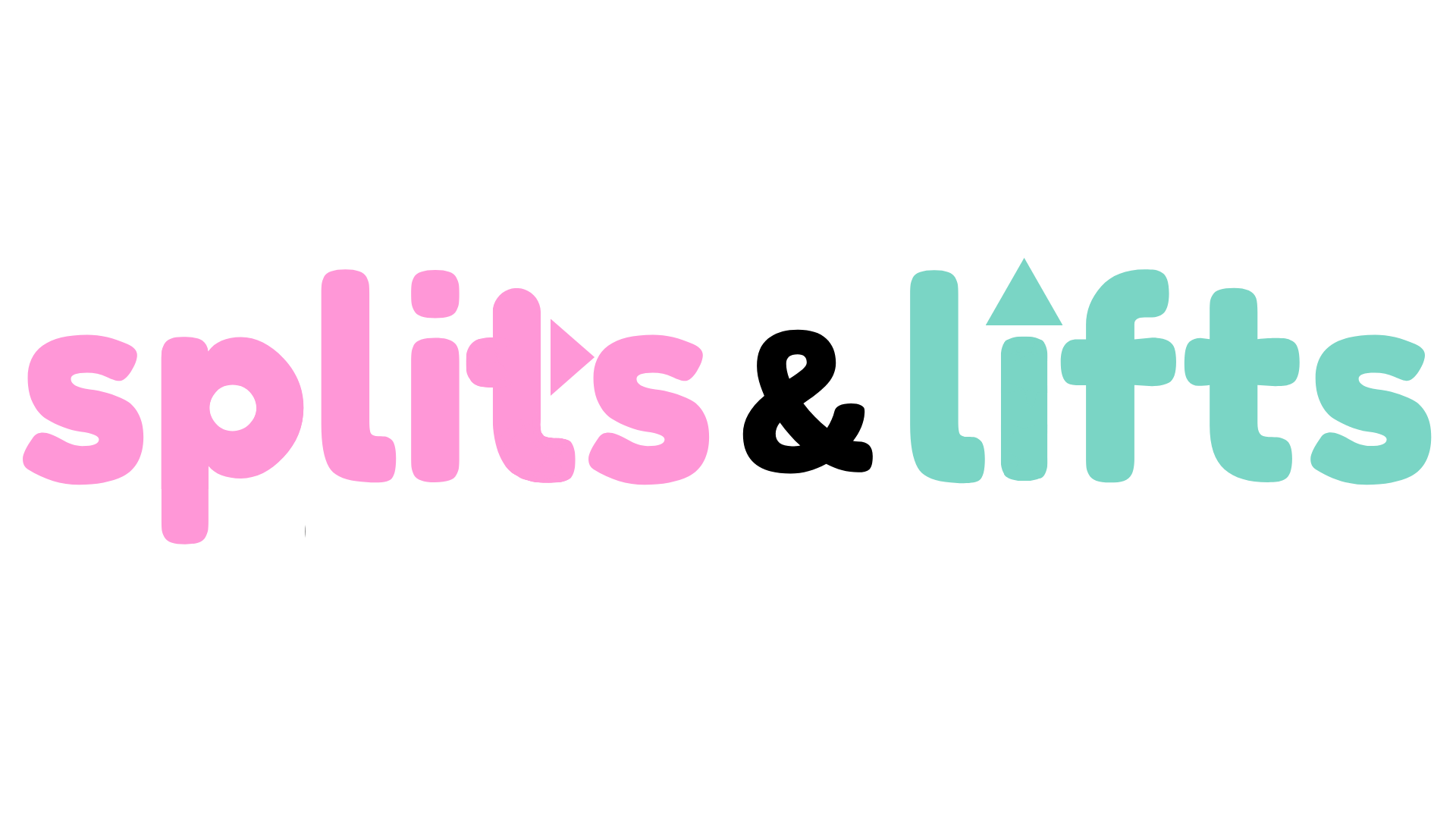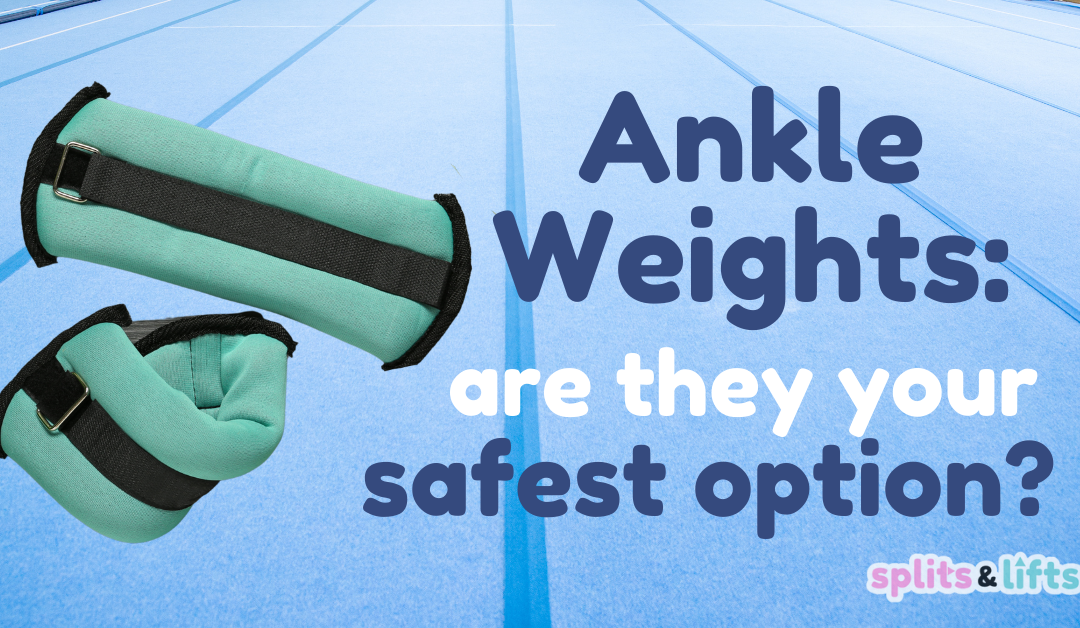Coach says, “Go warm up your jumps,” and the gymnasts know what that means––strap on the ankle weights.
Your gymnasts shuffle around with 5 to 8 pounds of rocks on the end of their legs, scoot to the edge of the floor or Tumbl Trak, and begin their warm-up.
And they have to admit, it works! The extra poundage works much in the same way as holding a dumbbell. The girls have to work a little harder to get off the ground, and the extra weight builds momentum in a split jump to yank those legs apart farther than normal.
Un-velcro those babies at the end of the warm-up and BAM! Gymnast Gina is bouncing off the walls, feeling light as a feather.
The science is there, but so is the risk.
In fact, the ankle weight training might be doing more harm than good to your team’s hip joints.
Ankle weights put the hip joints at risk.
First, let’s just go over why (and when) I’m advising against using ankle weights. I won’t spend too long on this subject because my point is what actually to do instead.
But here we go:
Ever play that skip-it game? You know, where the coach stands in the middle and swings a rope around for the gymnasts to jump over it?
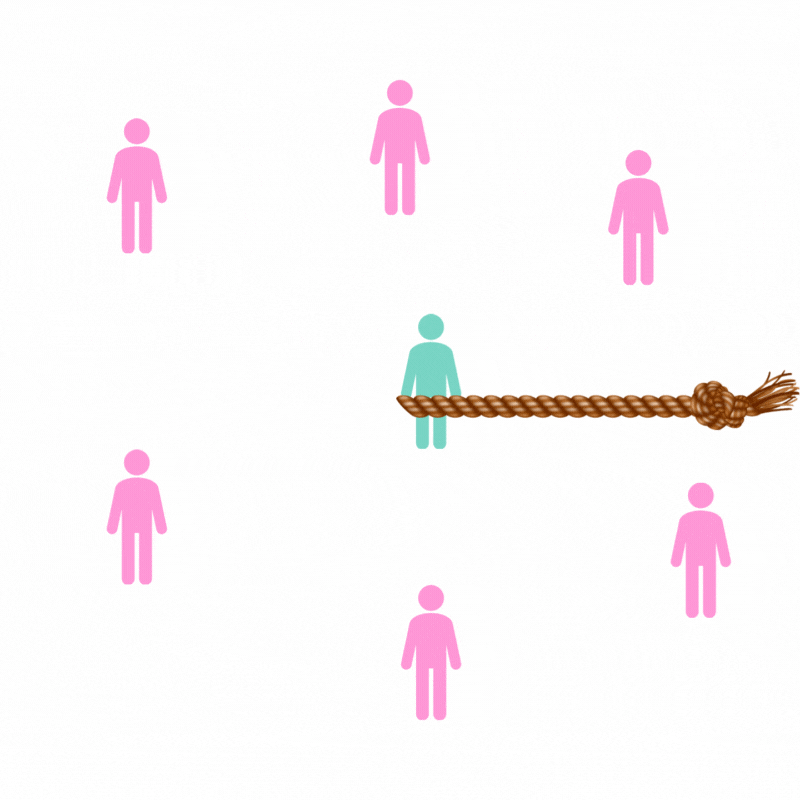
Now, imagine your gymnast’s hip is that little turquoise guy in the center. Imagine the ankle weight is the knot at the end of the rope.
If you’ve ever played the role of the turquoise guy, you know there’s a good bit of force pulling on you to get that rope to swing, especially the farther away your gymnasts are from you.
No biggie because you’re tough as nails and can handle a little torque for the good of the game. But what a full, entire human can handle no-sweat is a little too much for the hip.
That snap into a split jump is a TON of dynamic force you’re asking the joint to control.
The gymnast may be able to get up into a big split, but the control at the end range is little to none.
That means a gymnast is typically swinging beyond her body’s safe zone.
If you want to read a little more about the science behind this, check out Dave Tilley’s article on the subject.
But again, the why not isn’t why we’re here. I want to show you some better, SAFER options to achieve the same results (flexibility & power)!
Instead of ankle weights for flexibility, try sliders.
There’s this magical, wonderful tactic out there called “eccentric loading.”
Basically, we focus on finding and strengthening the end range instead of snapping into it and hoping for the best.
Where do gymnasts typically struggle with their flexibility range? I find it’s in the back leg.
So here’s two exercises we can do that target that hip in a slow, controlled environment:
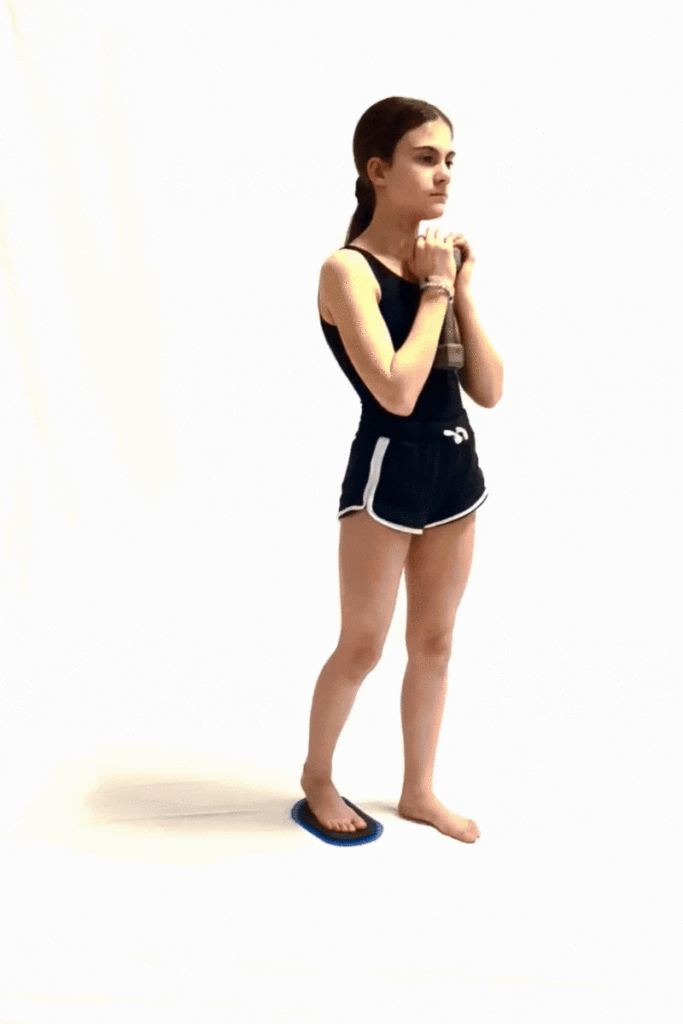
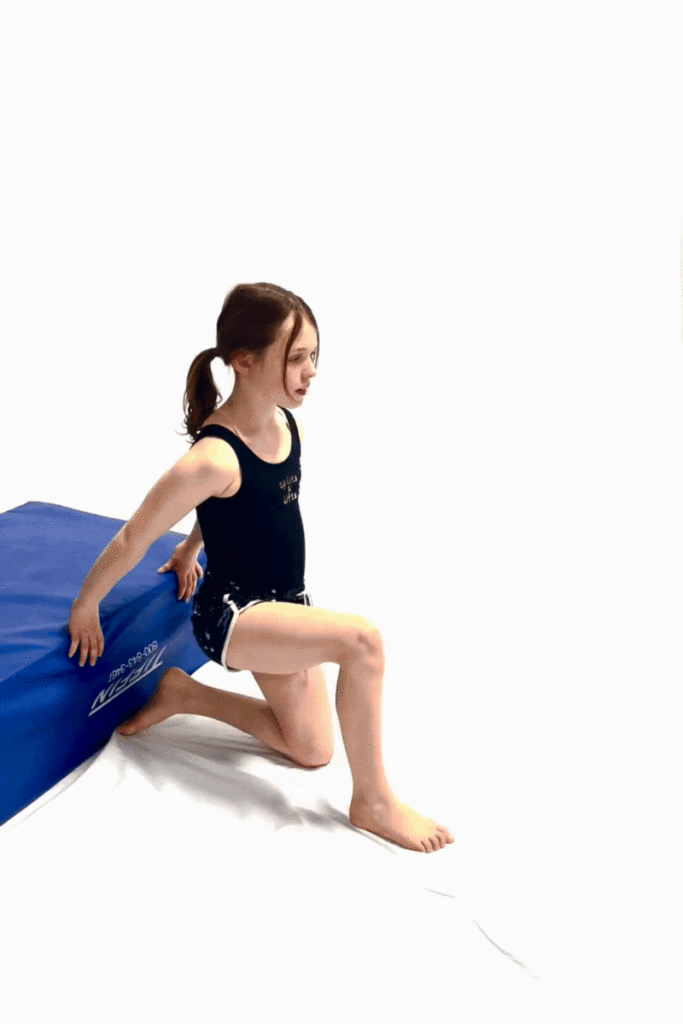
Use weights for power, just not ankle weights.
Scientifically speaking, weights DO help create power. And the typical way of using ankle weights (weights on, weights off) is actually exactly how you do it.
BUT there’s a very simple way to reduce the risk of injury. Unstrap those weights and just hold ’em instead!
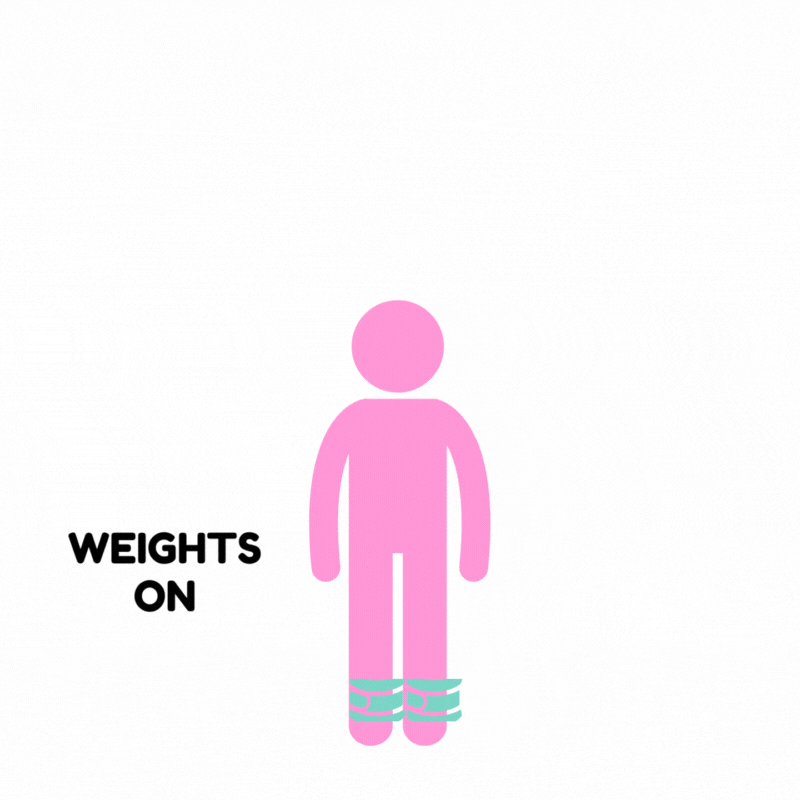
You may be thinking, “But Coach Sarah, a lunge or a squat isn’t the same as a split jump.”
No, but we’re still training the muscles that create the quick turnaround that produces power.
Plus, your hands can hold MUCH heavier weights than you could ever strap to your ankles. At least, a LOT more safely.
So in my book, that trade-off is looking pretty good!
What do you think?
Do you use ankle weights with your gymnasts? I hope these quick tips make you reconsider.
Overall, there are better options that yield the same (if not better) results without the risks. The longterm health of the gymnast is always more important than a beautiful jump!
If you’re looking for practical ways to create power and learn more about progressive and corrective conditioning, be sure to join my newsletter for regular tips like these!
